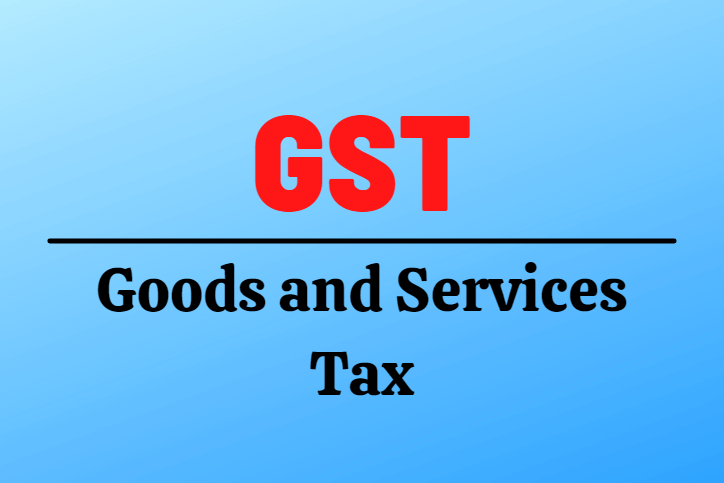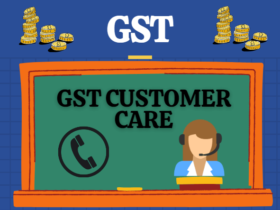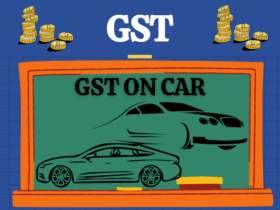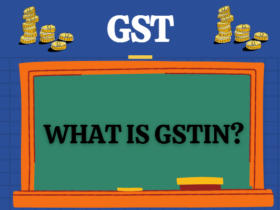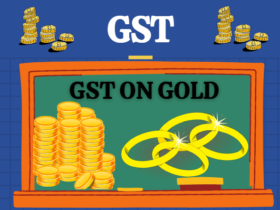What is Goods and Services Tax- GST (India)? The Goods and Services Tax first introduced in a budget speech presented on 28 February 2006.
This laid the foundation for a complete reform in India’s indirect tax system. Finally implemented as the Goods and Services Tax Act on 1 July 2017. The indirect taxation system thus went through a series of amendments since its introduction.
GST is a new form of tax that replaces all central and state taxes and levies duties like excise, countervailing duty, service tax, value-added tax, octroi, entry tax, and luxury tax. Know about What is Income Tax.
Goods and services should tax on the basis of value addition at each stage and not on the gross value of the goods or services billed at each stage. What is Goods and Services Tax- GST (India).
Furthermore, the tax must ultimately be borne at the point of production, at the point of consumption. Although the tax department should be able to track the value addition at each stage and collect the tax ratio for the value-added at each stage.
GST paid by consumers but sent to the government by businesses selling goods and services.
With this tax reform, GST replaced many indirect taxes that were levied on various goods and services.
The Central Board of Indirect Taxes and Customs (CBIC) is the regulatory body governing all changes and amendments regarding this tax.
GST In Detail
The Goods and Services Tax is a destination-based, multi-platform, comprehensive tax levied at each stage of value addition.
After replacing many indirect taxes in the country, it has successfully helped the Government of India to achieve the ‘One Nation One Tax’ agenda.
Goods and services sold within India’s domestic limits taxed for consumption. Implemented by most countries around the world with related adaptation. The tax has been successful in simplifying India’s indirect taxation structure.
GST levied on the final market price of internally manufactured goods and services, reflecting the maximum retail price.
Customers will have to pay this tax on the purchase of goods or services on their inclusion in the final price. Collected by the seller, it then required to pay to the government, thus enforcing the indirect event.
GST rates are equally applicable to different goods and services across the country. However, goods and services are classified under different slab rates for tax payments.
While luxury and comfort goods are classified under higher slabs, the requirements are included in lower and zero slab rates. The main objective of this classification is to ensure equal distribution of wealth among the residents of India.
READ ALSO : What are Income Tax Slabs in India?
Journey of GST in India
Back in 2000, the then Prime Minister of India introduced the concept of Goods and Services Tax.
He also formed a committee to draft the new indirect tax law. However, it took 17 more years for its implementation. Meanwhile, the bill underwent several proposals, amendments, and rescheduling.
| Year | Task |
|---|---|
| 2000 | Committee constituted by the PM to draft the Goods and Services Tax Law for India. |
| 2004 | A task force stated the need to implement this law and reform the indirect tax system in India. |
| 2006 | The Goods and Services Tax was fixed on 1 April 2010 by the Finance Minister of India. |
| 2007 | The decision to phase out Central Sales Tax (CST). Consequently, CST rates reduced to 3% from 4%. |
| 2008 | The dual structure of GST was finalized by the Election Commission for separate legislation and levy. |
| 2010 | Postpone the introduction of GST due to structural and implementation constraints. A project was started for the computerization of commercial taxes. |
| 2011 | Introduction of the Constitution Amendment Bill to enable the Goods and Services Tax law. |
| 2012 | Discussion about the tax introduced by the Standing Committee; clause 279B came to a halt due to lack of clarity. |
| 2013 | GST’s report presented by the Standing Committee. |
| 2014 | The Finance Minister of India reintroduced the Goods and Services Tax Bill to the Parliament. |
| 2015 | The Lok Sabha approves the bill, but it is stalled in the Rajya Sabha. |
| 2016 | The Goods and Services Tax Network (GSTN) went live. The revised model of the law was passed in both the Houses of Parliament and received its approval from the President of India. |
| 2017 | The cabinet approved four supplementary bills on GST passed by Lok Sabha and Rajya Sabha. The Goods and Services Tax Law was enacted on 1 July 2017. |
Difference between GST Tax and Old Tax Structure
| Points | Old Tax Structure | GST Tax |
|---|---|---|
| Number of Laws | States have different laws for different taxes and related VAT. | There is only ONE law |
| Tax Rate | Existence of separate tax rates | All states will have a CGST rate and a uniform SGST rate |
| Cascading effect (Taxes on Tax) | Presence of wide impact of taxes due to a multiplicity of taxes | The cascading effect is reduced which makes it much simpler |
| Tax Burden | The high tax burden on taxpayers | The tax burden is much reduced |
| Tax Structure | The presence of multiple taxes makes compliance difficult | Keeping or absorbing taxes in one go makes compliance simple and easy. |
| Prices for Consumers | Usually very high due to cascading effect of taxes | Prices are expected to be reduced |
Components of Goods and Services Tax
The Goods and Services Tax applies three components, the center, the state, and the unified levy.
- CGST – Central Goods and Services Tax is collected by the Central Government on sales.
- SGST – State Goods and Services Tax is also collected by the state government on the sale of goods and services by the state government.
- IGST – The central government collects the Integrated Goods and Services Tax on the sales-affected inter-state.
Goods and Services Tax – Applicable Rates
The GST tax structure in India is divided into six rate slabs applicable to various goods and services. Following is the Goods and Services Tax structure in the country.
- Exempted goods (No tax applicable)
- 0.25% rate slab
- 5% rate slab
- 12% rate slab
- 18% rate slab
- 28% rate slab
READ ALSO : What is TDS -Tax Deducted at Source
READ ALSO : What is an Income Tax Refund?
